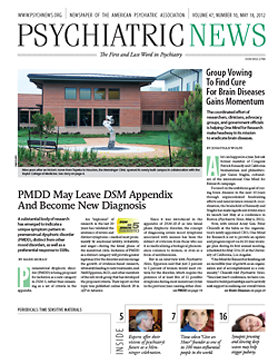We are blessed with a spate of evidence-based therapies for specific psychiatric disorders and cursed with all their acronyms—CBT, DBT, TFP, ERP, SIT, IPT, EMDR, and MBSR, to name a few. We cannot rely solely on these specialized treatments: there are so many that therapists cannot possibly learn them all, many patients present with multiple disorders, and many therapists treat a wide variety of patients. We need generalists alongside specialists. I learned this lesson the hard way four decades ago as a novice therapist assigned in a training clinic to conduct systematic desensitization for a patient with a public-speaking phobia. All went well until he was adequately desensitized and then merely wanted to talk with me.
A half-century ago, Jerome Frank famously claimed that therapies were effective more by virtue of what they had in common than their differences. In the decades since, psychotherapy researchers have been hard pressed to demonstrate differences in effectiveness among therapy brands. Supporting Frank’s claim, extensive subsequent research attests to the pervasive importance of the therapeutic relationship, and some research suggests that differences among therapists can outweigh differences among therapies.
While specialists continue researching disorder-specific treatments, we generalists also must continue to improve our practice of what I have come to call Plain Old Therapy in protest of ever-proliferating brands. Peter Fonagy, Ph.D., and I made the bold claim that mentalizing—cultivating awareness of mental states such as thoughts and feelings in self and others—is the most fundamental common factor in the conduct of psychotherapy, regardless of the therapist’s methods. Thus, in teaching therapists, we begin with the proposition that they already are engaged in mentalizing, with John Oldham, M.D.’s caveat: if they are doing their job. To the extent that mentalizing is intrinsic to psychotherapy, we also assert that focusing on mentalizing is the least novel approach to psychotherapy imaginable.
Lacking novelty, this focus would be banal without developmental research linking parents’ mentalizing to their children’s secure attachment. Children seek comfort and derive a feeling of security from parents who mentalize. And securely attached children, having been mentalized, become better at understanding mental states—for example, better able to articulate their feelings and more empathic with their peers. The developmental benefits of this mentalizing process are evident in extensive research showing that secure attachment is conducive to effective emotion regulation and healthy personality development across the lifespan. Conversely, trauma such as abuse and neglect in early attachment relationships is associated with impaired parental mentalizing and profoundly insecure attachment in the child, which also compromises the child’s subsequent development of mentalizing. From this developmental perspective, the crux of trauma is feeling psychologically alone in emotional pain. This adverse developmental experience is a nonspecific risk factor for later psychopathology.
Anthony Bateman, M.A., F.R.C.Psych., and Fonagy developed mentalization-based treatment for borderline personality disorder, to which developmental adversity makes a substantial contribution. Yet this treatment approach is now finding wider applications, and I believe that its generic form—Plain Old Therapy—boils down to promoting mentalizing in the context of secure attachment. I once remarked in a trauma-education group, “The mind can be a scary place.” A patient quipped, “Yes, and you wouldn’t want to go in there alone!” From this perspective, Plain Old Therapy has broad applicability.
I do not believe that a good relationship is sufficient for change. Like our specialist colleagues, we generalists must develop a clear formulation of key problems and goals as a focus for treatment. Moreover, when patients need specialized treatments, generalists must refer them; we should not employ Plain Old Therapy in the treatment of obsessive-compulsive disorder for patients who can benefit from exposure and response prevention. Yet, as I learned from my first patient, specialists also must be competent practitioners of Plain Old Therapy; their methods must be superimposed upon it. Informed by mentalizing, contemporary attachment research promises to clarify the processes by which venerably therapeutic aspects of the patient-therapist relationship exert their influence in Plain Old Therapy.

Jon G. Allen, Ph.D., is a senior staff psychologist at the Menninger Clinic and a professor of psychiatry in the Menninger Department of Psychiatry and Behavioral Sciences at the Baylor College of Medicine. He is senior author of Mentalizing in Clinical Practice (American Psychiatric Publishing). APA members may purchase the book at a discount at www.appi.org/SearchCenter/Pages/SearchDetail.aspx?ItemId=62306. 

